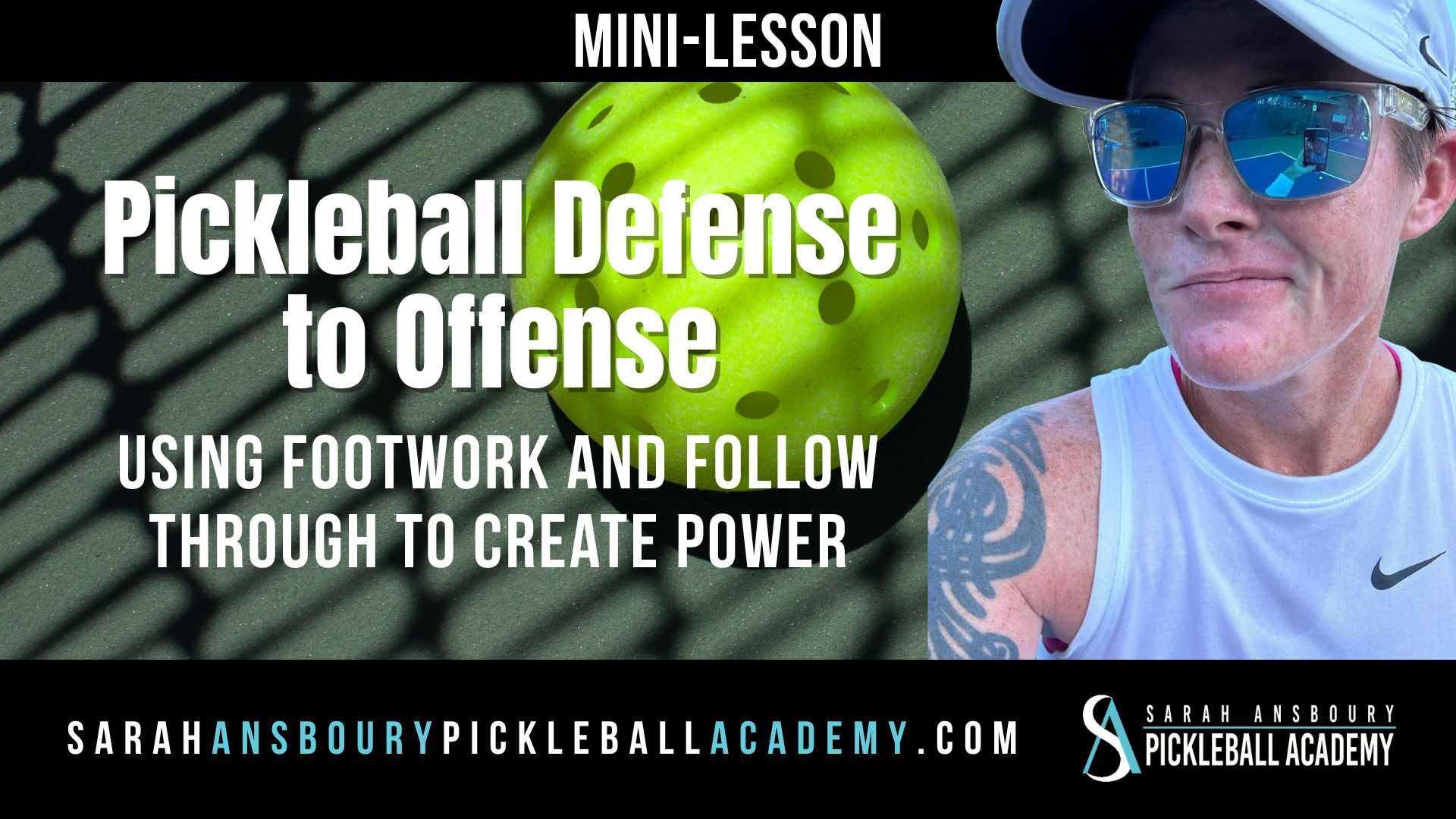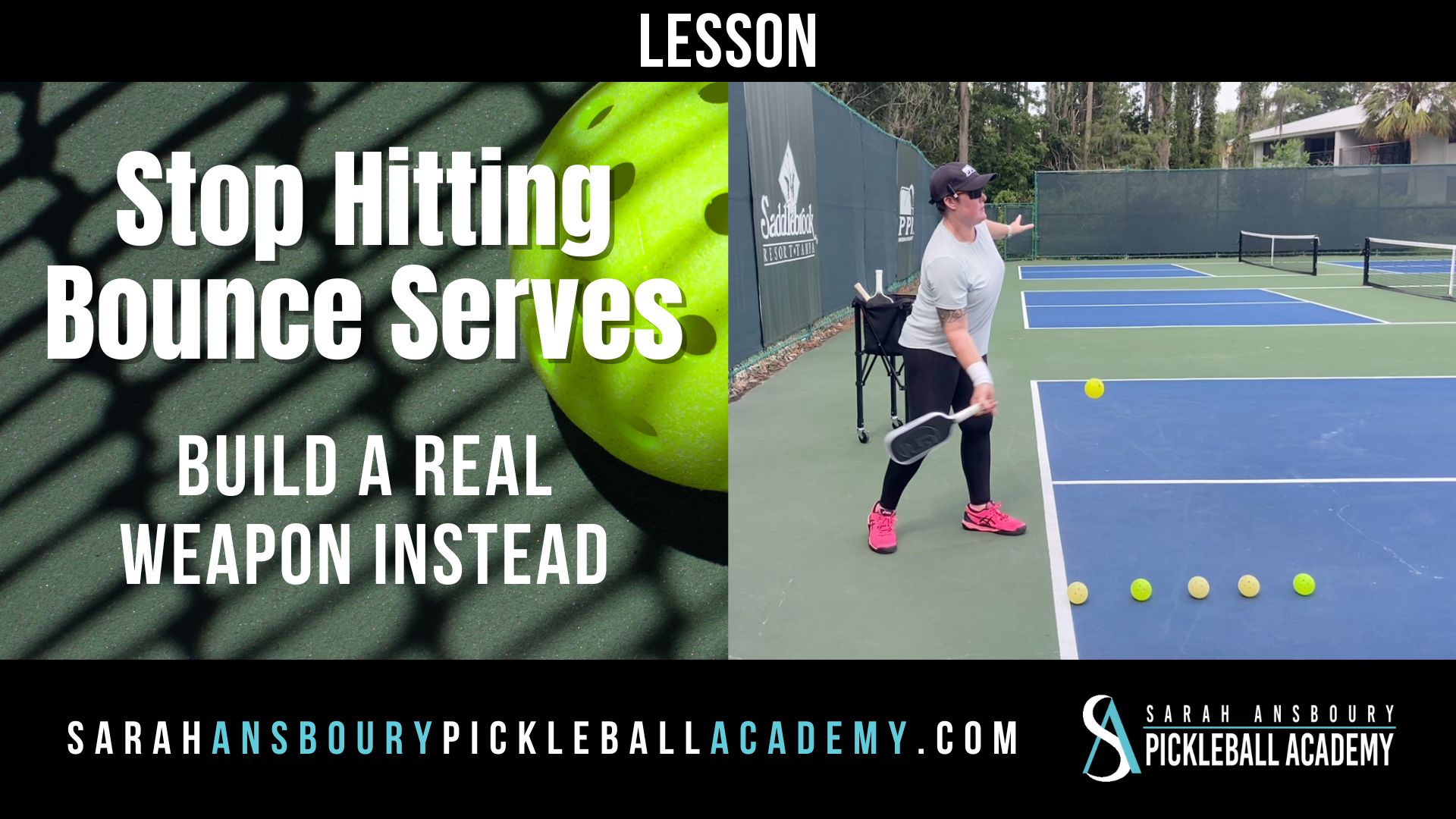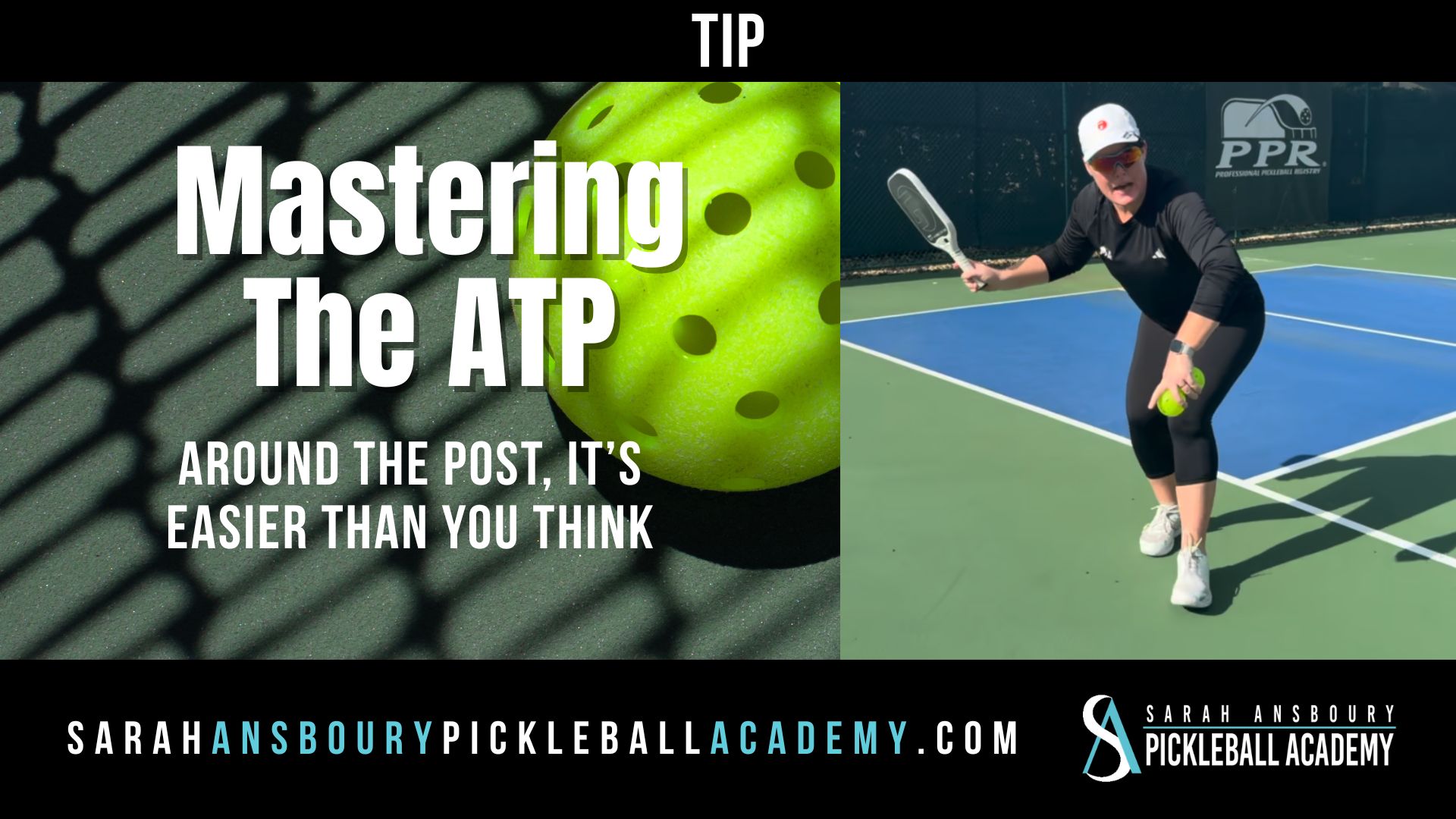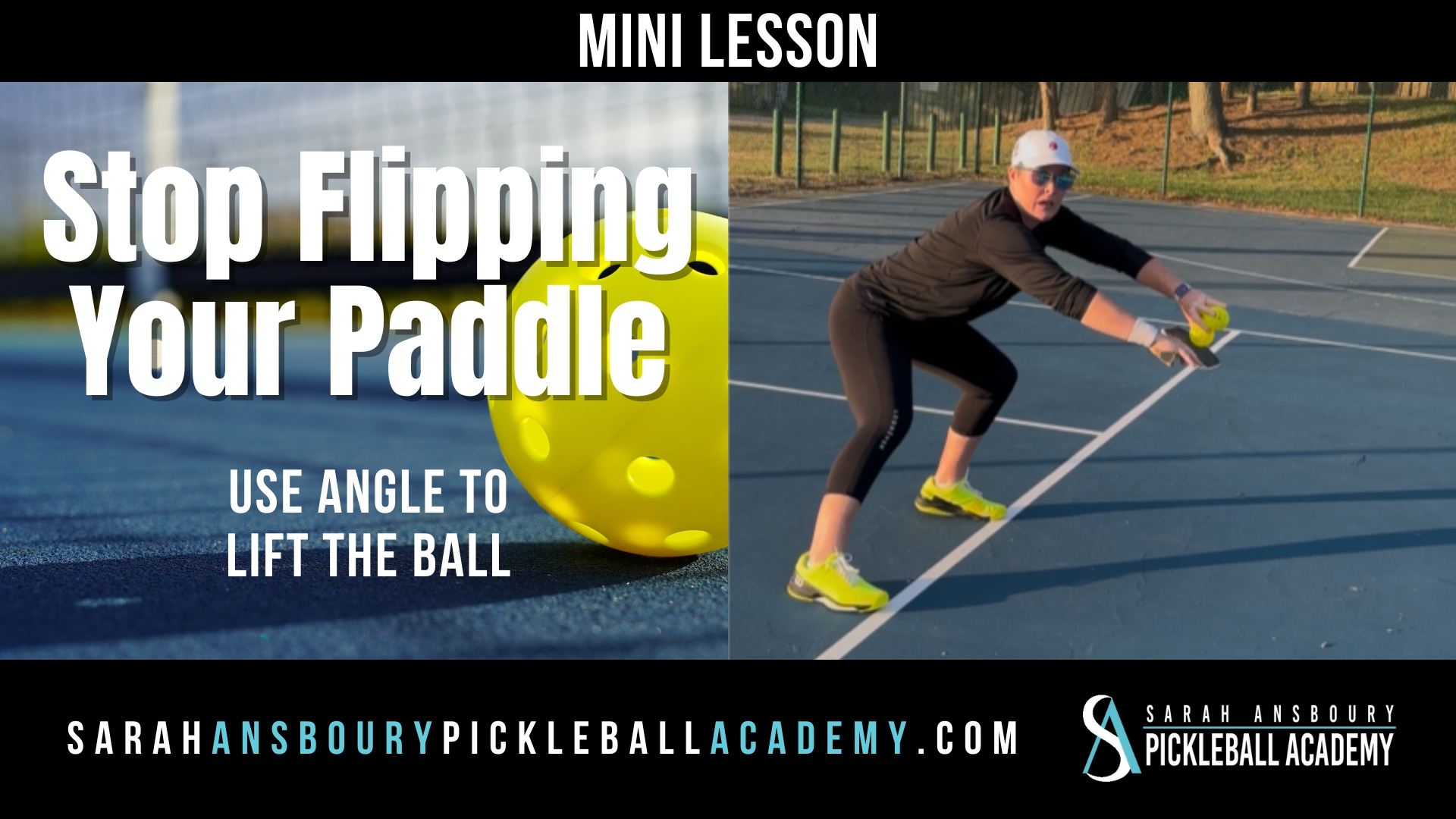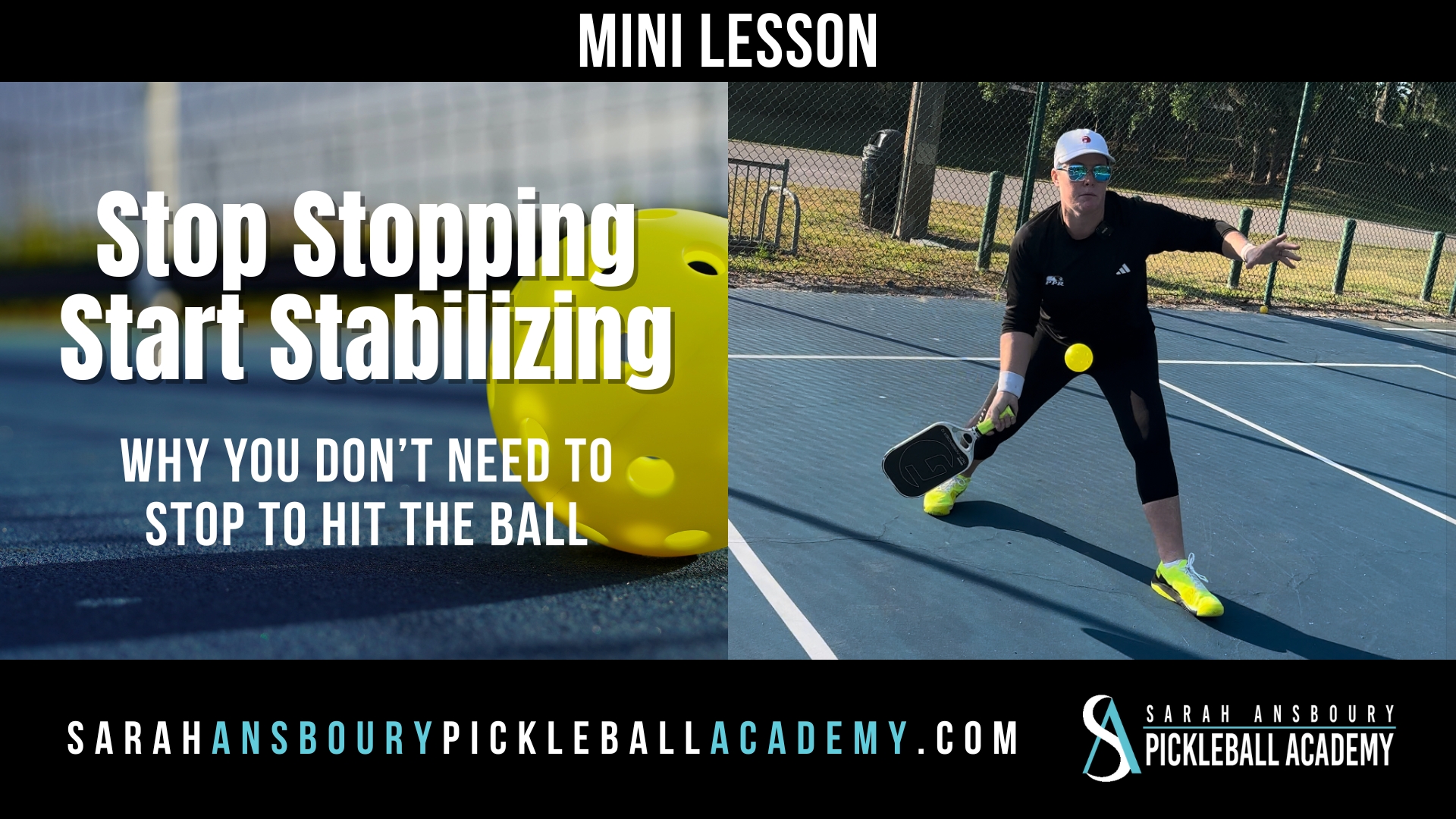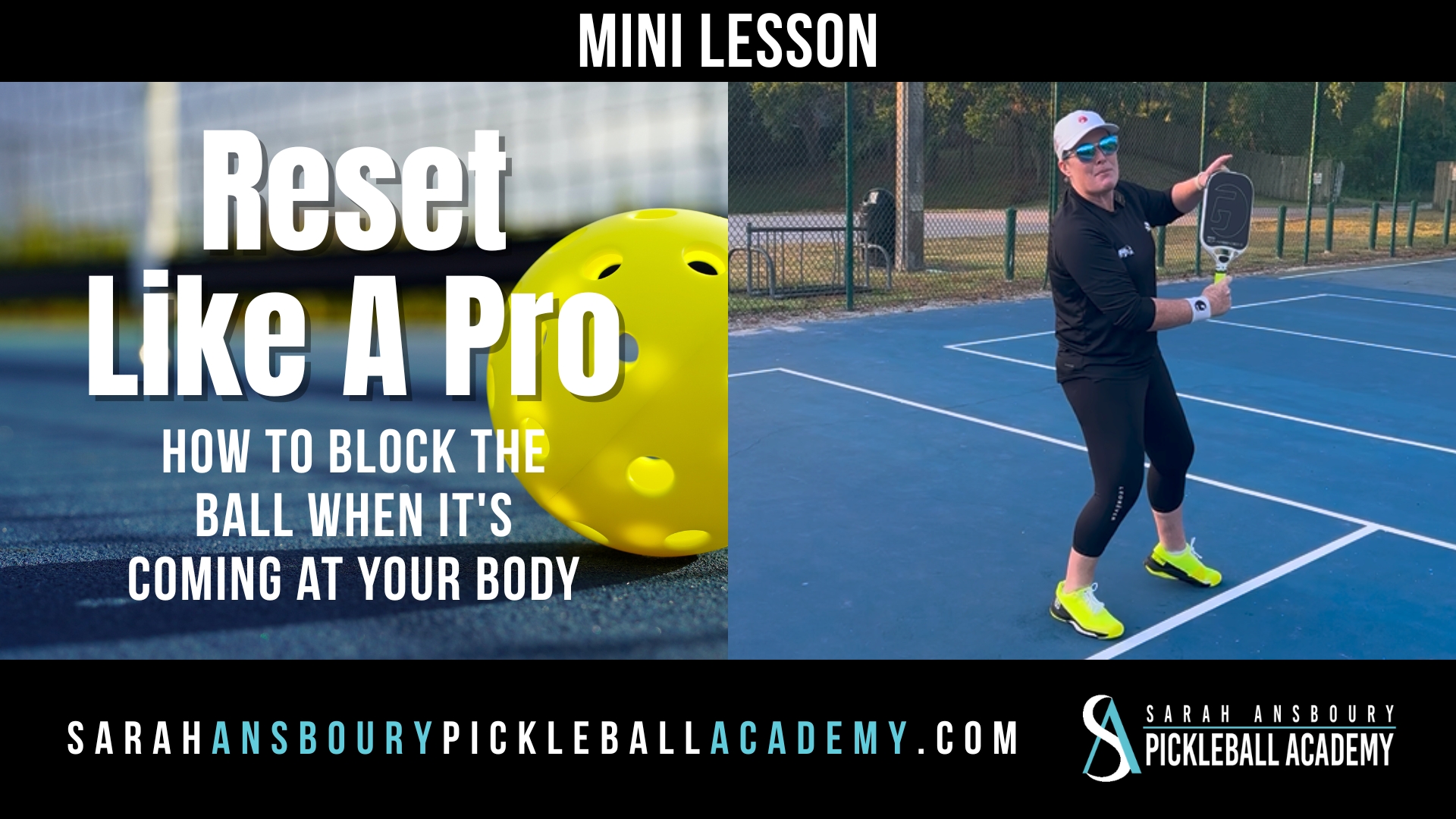One thing I notice with new students, when they are attempting a forehand slice, is they open up their bodies too much and creates a pulling motion which decreases power, flow and accuracy. Here’s what you should be doing…
Let’s dive into some tips for perfecting your backhand baseline slice. Whether you’re at the net or the baseline, the key here is all about footwork and optimizing your contact time with the ball.
Remember, the magic starts with the backswing. Your paddle’s tip should be directed upwards, reaching towards your ear or chin. Observe how my elbow extends, and my non-dominant hand lends support. This is crucial for both left and right-handed players. By having a strong shoulder engagement, you avoid the common mistake of a short, pulling motion. Instead, we’re aiming for an extended forward motion, with our non-dominant hand guiding our shoulder movements.
Now, let’s break down the mechanics. Start with your back foot, then the front one. This sequential movement aids in generating energy for your shot. Keep that front leg engaged for an upward lift, ensuring a lower trajectory for the ball. It’s essential to catch the ball early, hence I advise having a higher ball drop for practice.
Let’s focus on that sweet spot of forward motion. Remember, the guiding hand, often overlooked, plays a significant role. Its proper placement helps maintain a straight line while finishing your swing. Leading with the opposite shoulder is essential. This strategy applies to both down-the-line shots and cross-court plays. Think about creating a straight line of extension, enhancing the power and spin in your slice shots.
Moving onto footwork, your back foot’s role is paramount. It precedes your front foot, leading to a swift transition. This order is vital for effective backhand slices, especially for returns and third shots. Maintaining this sequence provides the power and accuracy needed for your shots.
As you practice, perfect your ball drop. Focus on a high drop, which will naturally lead to an under-motion. Remember, your non-dominant hand is your guide, not just hanging around. It’s engaged and cradling the paddle, assisting in maintaining the correct angle.
When executing a slow, controlled shot, avoid any haste. The paddle’s contact with the ball will do the work. This controlled motion might appear slow, but it’s a secret to a well-executed slice.
So, next time you’re out there, think about these principles. Embrace the extended backswing, understand the significance of sequential footwork, and allow your non-dominant hand to guide your shots. With these techniques in your toolkit, you’ll master the art of the backhand baseline slice, delivering power, accuracy, and finesse to your pickleball game.

